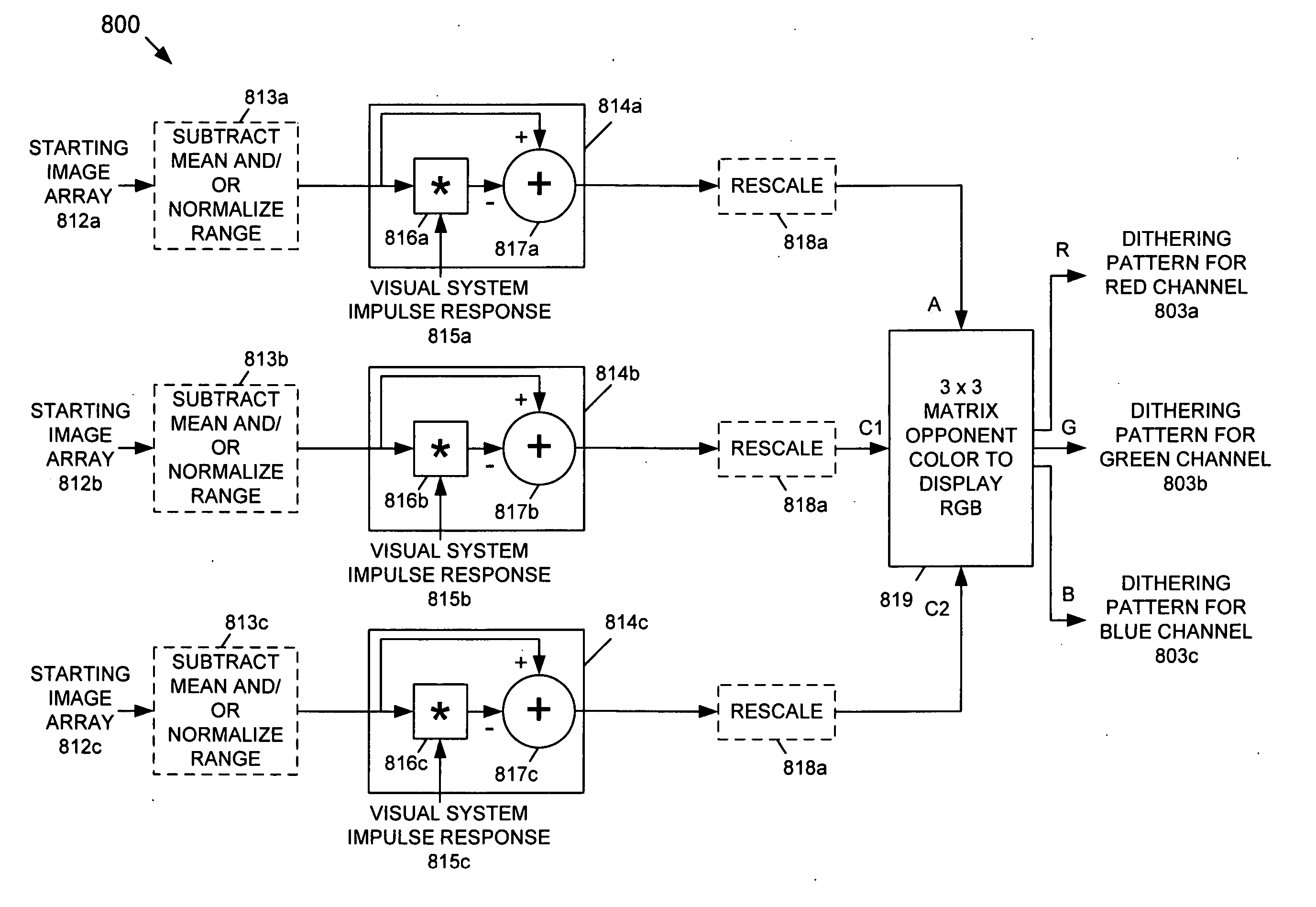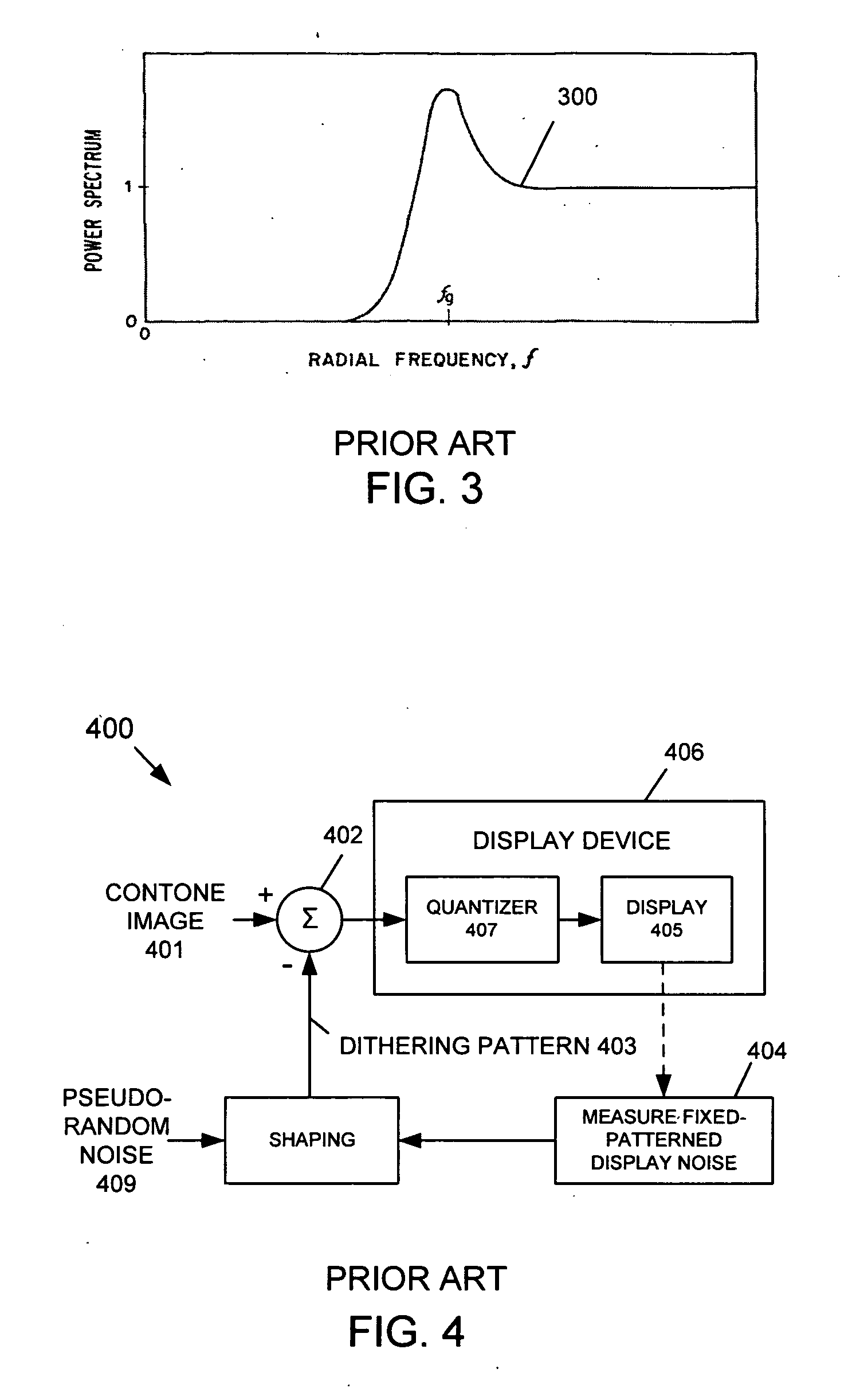Bit-depth extension of digital displays via the use of models of the impulse response of the visual system
a visual system and impulse response technology, applied in the field of digital displays, can solve the problems of low-cost displays, unable to achieve the effects of reducing the spatial resolution of images, and reducing the cost of display
- Summary
- Abstract
- Description
- Claims
- Application Information
AI Technical Summary
Benefits of technology
Problems solved by technology
Method used
Image
Examples
Embodiment Construction
[0041] The present invention provides a Bit-Depth Extension (BDE) technique that uses a dithering pattern that is generated entirely using spatial operations, that is, without using frequency-transform techniques. Accordingly, the BDE technique of the present invention prevents contouring artifacts from appearing in an image that is displayed by a display having a bit-depth that is less than the bit-depth of the image. In one exemplary embodiment, the dithering pattern is generated based on an achromatic visual model. In another exemplary embodiment, the dithering pattern is generated based on a spatio-chromatic visual model.
[0042] The present invention is primarily intended for use with Liquid Crystal Display (LCD) or similar type displays having a digital bit-depth bottleneck, such as graphics controller cards having limited video RAM (VRAM). Bit-depth limitations can also arise in an LCD display itself, or the internal hardware driver of an LCD display. Accordingly, the present ...
PUM
 Login to View More
Login to View More Abstract
Description
Claims
Application Information
 Login to View More
Login to View More - R&D
- Intellectual Property
- Life Sciences
- Materials
- Tech Scout
- Unparalleled Data Quality
- Higher Quality Content
- 60% Fewer Hallucinations
Browse by: Latest US Patents, China's latest patents, Technical Efficacy Thesaurus, Application Domain, Technology Topic, Popular Technical Reports.
© 2025 PatSnap. All rights reserved.Legal|Privacy policy|Modern Slavery Act Transparency Statement|Sitemap|About US| Contact US: help@patsnap.com



